Istanbul is a landscape where the past, present, and future exist in unity. Cars drive on cobblestone streets. Newly built shops sit next to ancient architecture, blurring together the new and the old.
But a closer look reveals just how much care and effort were put into the old architecture, built entirely without the handiness of modern technology or machinery. Here are six architectural gems scattered across Istanbul that offer an insight into the past. Engage in history and above all, gain a heartfelt appreciation for the care put in by artists dedicated to preserving their stories.
Hagia Sophia
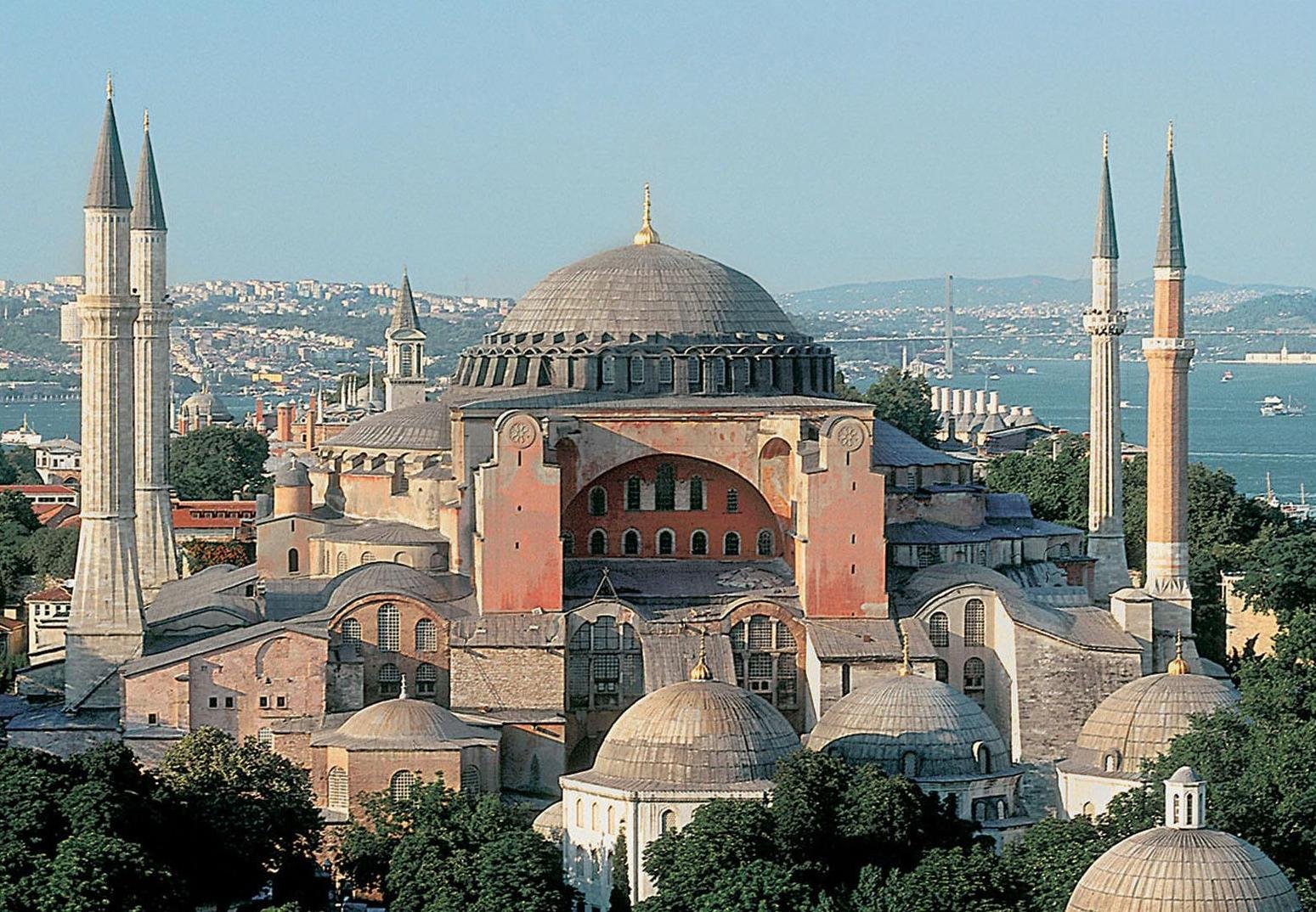
Initially built as an Orthodox Cathedral in 532, the Hagia Sophia holds the history of the various reigns of Turkey. The structure also held the title of the largest church in Istanbul until 1453. At this time, rule fell to the Ottomans who consequently converted the structure into the first imperial mosque in Istanbul. While the adhan or call to prayer is still called from the minarets, the building now stands as a museum. It showcases historical evidence and artifacts from both eras, as well as representing the blend of culture, and the importance of uniformity. To this day, the Hagia Sophia represents an important landmark in all cultures and beliefs.
Sultan Ahmet Camii (Blue Mosque)
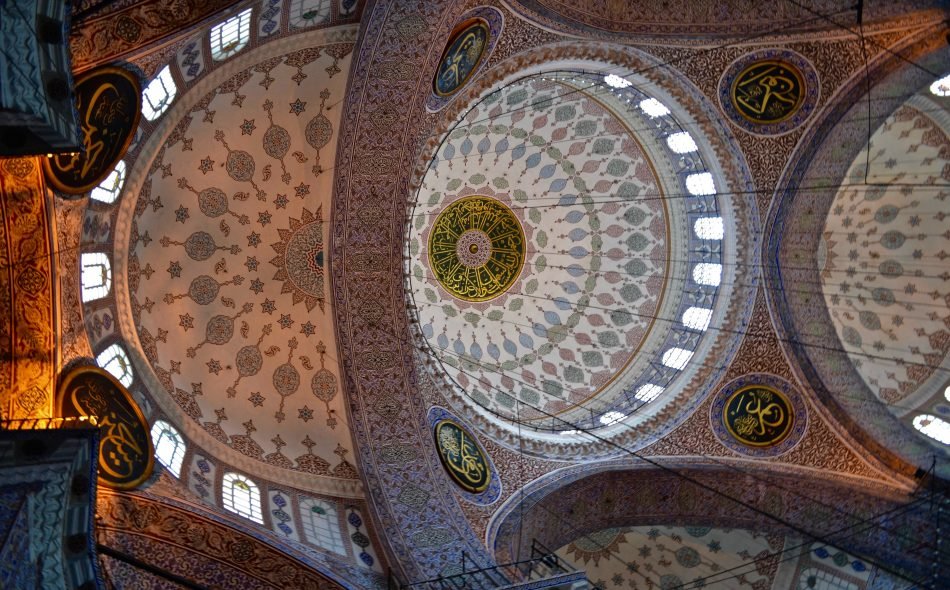
Photo Credit: Halah Butt
Nicknamed “the Blue Mosque” for its hand-painted blue tiles, the Sultan Ahmet came as a result of the 1608-1618 war. Emperor Ahmet, only 19 at the time, wished to reestablish the Ottoman’s power after being defeated by the Persians. As a result, he began construction of the Sultan Ahmed Mosque. Six towering minarets surround the structure’s blue domes and spacious courtyard. In addition, 20, 000 handmade tiles line the mosque’s interior in the shapes of various flowers, especially tulips, in different shades of blue. Large chandeliers hang low from wires attached to the ceiling. An urge to lie on the floor and stare at the expansive high ceilings, arching with the curve of the domes, will take over as you gaze at the sweeping space of the structure’s interior.
The Grand Bazaar
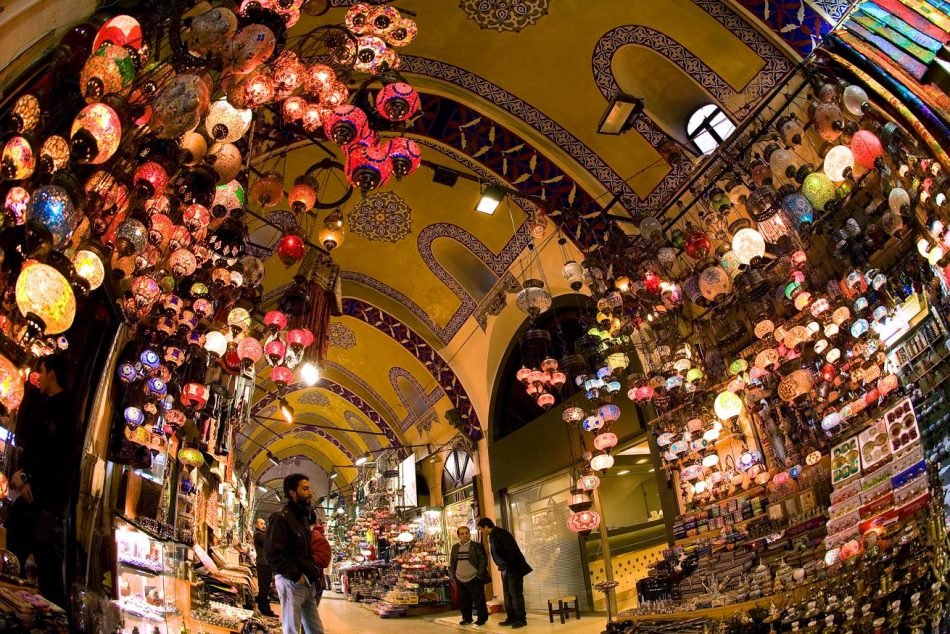
With so much to marvel at, the Grand Bazaar contains all the wonders of Turkey. Lighting from mosaic lanterns reflects off silver jewelry and gemstones. Wooden chess sets and golden kettles fill up various shelves. The smell of spices and herbs and the aroma of delicious coffee linger in the air. Stalls filled with powdered Turkish delights and orange spices lure in hungry customers. But asides from what it contains, the Grand Bazaar is considered one of the oldest and largest covered markets in the world. It stretches over 61 streets and includes 4000 shops and stalls and is accessible by four gates. The bazaar’s Byzantine design walls and ceilings, combined with the variety of shopping options, is the best place to lose yourself in. Immerse yourself in Turkish culture and walk on paths trodden by shoppers since the 1400’s.
Topkapi Palace
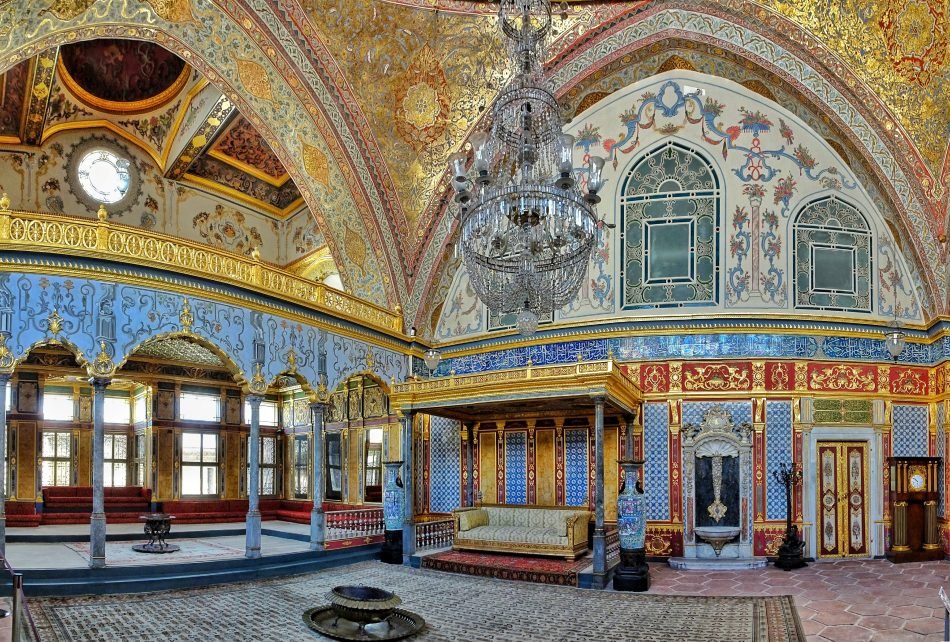
Bearing tall conical towers, flags rustling from the battlements and gold handiwork, the architecture of the Topkapi Palace falls nothing short of a castle. The palace is made up of four courtyards and a harem (private quarters). It served as housing for the various Sultans and their courts for over 400 years. But the palace is now a museum, containing artifacts such as scrolls, porcelain, armor, and weapons. While the Palace consists of hundreds of rooms, a selected few are open to the public. The Imperial Hall bursts with vibrant colors. From the ornate golden arches in the ceiling to the paintings on the pillars, and the glints of crystal chandeliers. Stain glassed windows overlook gardens lush with naturally hollowed out trees and red tulips. Feel like royalty as you explore the palace grounds, from strolling through the many gardens to weaving through the pillared halls of the courtyards.
The Yeni Cami (New Mosque)
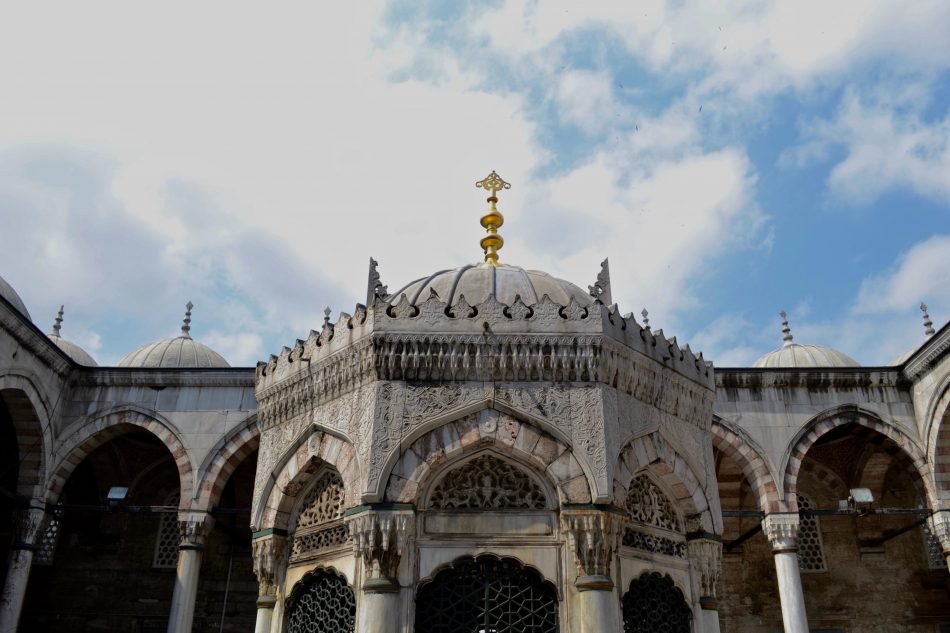
Photo Credit: Halah Butt
The immense detail, carved designs and intricate floral artistry of the Yeni Cami resembles the delicate yet strong sense of a ‘woman’s touch.’ Perhaps this is because the construction of it was finished off by the Sultan’s mother, Sultana Turhan Hatice. The mosque took half a century to build, noteworthily having three principal architects. Located in the heart of Istanbul just off the Bosporus straight, this architecture boasts itself in its symmetry, size, and popularity. Snack on freshly roasted walnuts from a vendor just outside the courtyard. Or walk across the road and take a boat tour on the Bosphorus Straight.
Fatih Mosque
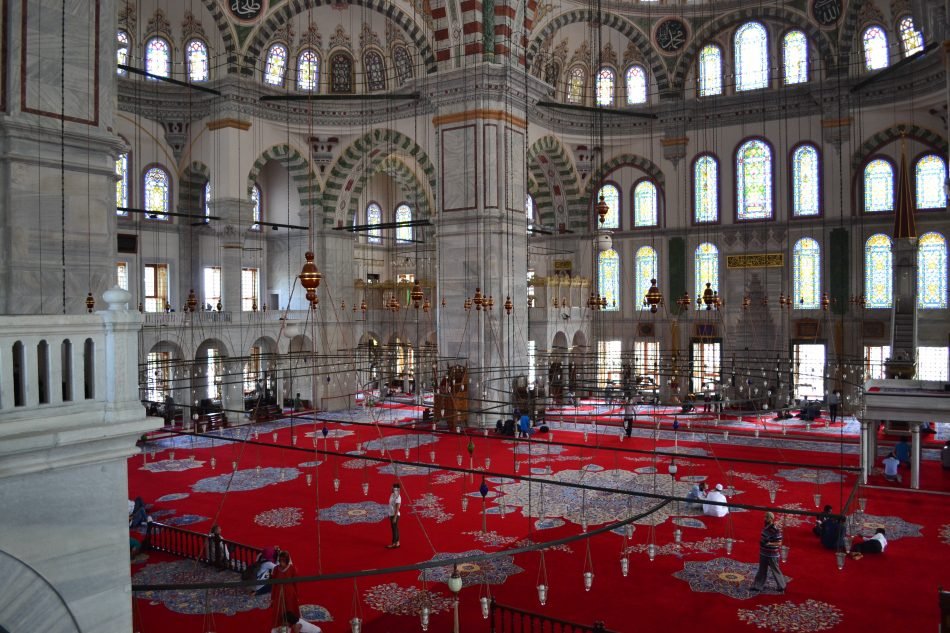
Photo Credit: Halah Butt
The Fatih Mosque’s grand interior, with broad walls showcasing multiple stain-glass windows, instills a sense of awe in its visitors. Its soft red carpet with intricate floral designs resembles a painting, or rather, a piece of art. Staircases built in the walls of the structure leads up to a second level, and thus showcases the best view of the expansive architecture. Established in the 1400’s, the design of the mosque was inspired by the Hagia Sophia. Centers were also built around the mosque housing many doctors, nurses, and psychologists. The sultan at the time also installed a hospital wing to the mosque, as well as a school teaching natural and religious sciences. Surely, the Fatih Mosque acts as more than a place of worship. It also remains an icon for the pursuit of medicine and education.


